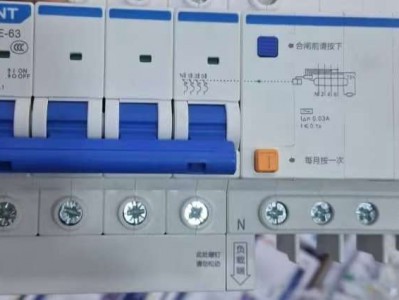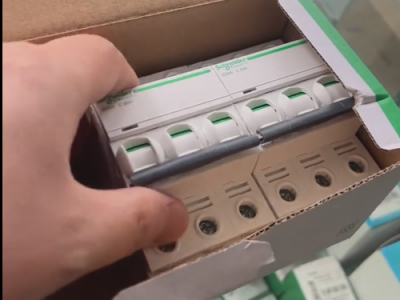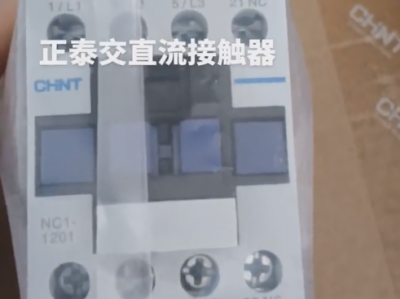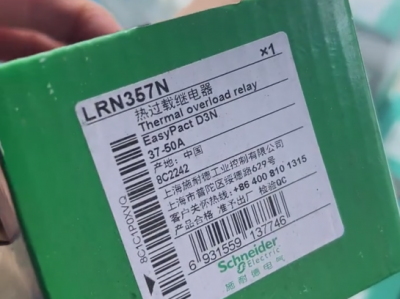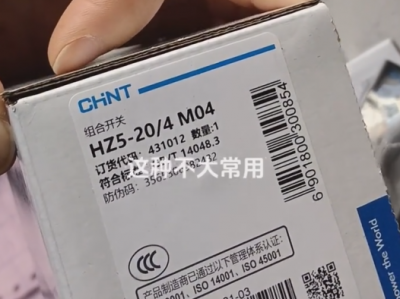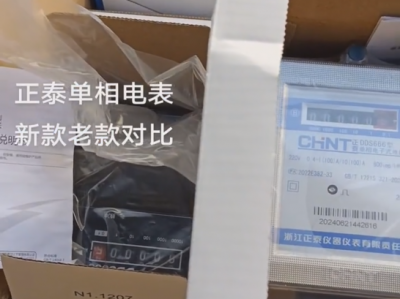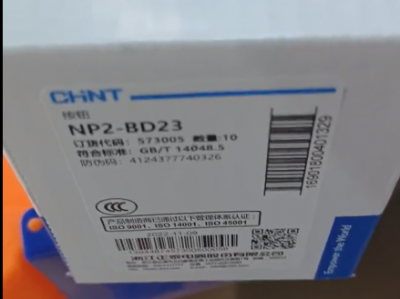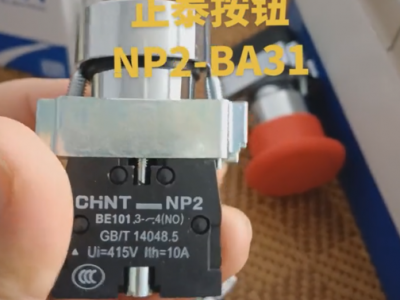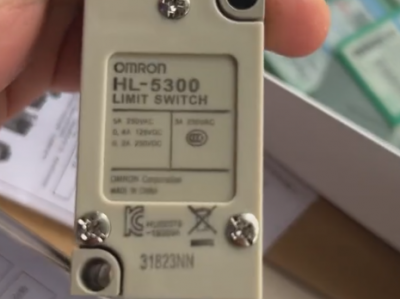Chint Thermal Relay
Product description
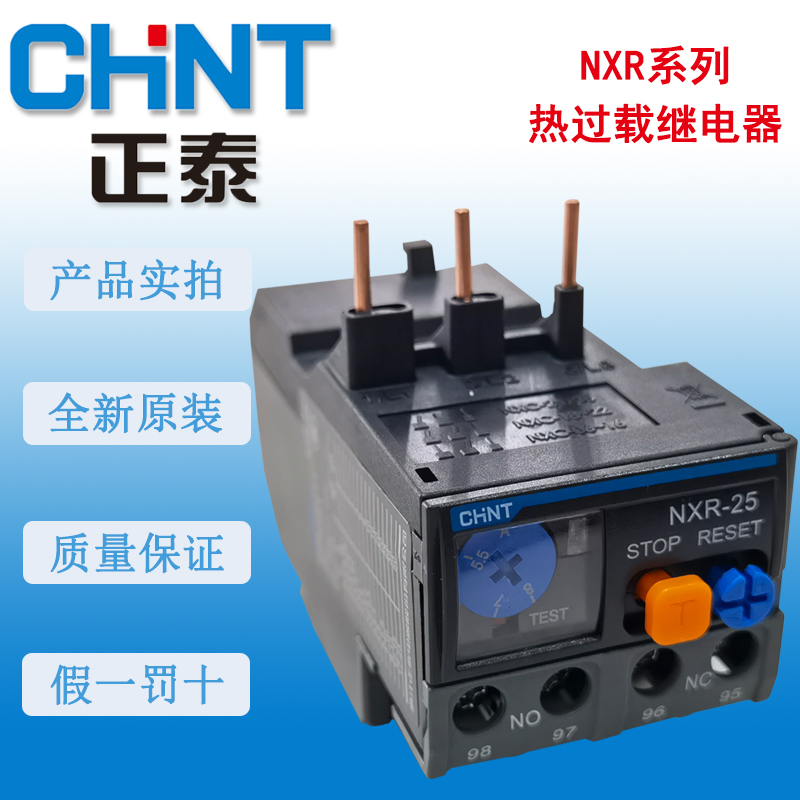 Chint thermal relay is a protective electrical product produced by Zhejiang Chint Electric Co., Ltd., which is widely used in the field of electrical control. The following will introduce it from aspects such as its working principle, model specifications, product features, and application scenarios:
Chint thermal relay is a protective electrical product produced by Zhejiang Chint Electric Co., Ltd., which is widely used in the field of electrical control. The following will introduce it from aspects such as its working principle, model specifications, product features, and application scenarios:
Working Principle
Thermal Effect of Current: When the current in the circuit passes through the thermal element of the thermal relay, the thermal element will generate heat. The thermal element is usually composed of a bimetallic strip, which is made by heating and rolling two alloys with a large difference in linear expansion coefficients.
Deformation of the Bimetallic Strip: Due to the different linear expansion coefficients on both sides of the bimetallic strip, it will bend and deform when heated. When the current in the circuit is normal, the bending degree of the bimetallic strip is small and will not trigger the action of the thermal relay; when there is an overload current in the circuit, the heat generated by the thermal element increases, and the bending degree of the bimetallic strip increases.
Pushing the Actuating Mechanism: When the bending degree of the bimetallic strip reaches a certain distance, it will push the connecting rod to act, disconnect the control circuit, thus making the contactor lose power and the main circuit disconnect, achieving overload protection for the motor or other electrical equipment.
Principle of Phase Failure Protection: The differential amplification mechanism composed of inner and outer push rods provides the function of phase failure protection. When the motor is operating normally, both the inner and outer push rods move forward to an appropriate position. When a phase of the power supply is disconnected, resulting in a phase failure, the bimetallic strip of this phase cools and resets, making the inner push rod move to the right, and the bimetallic strips of the other two phases increase their bending degree due to the increased current, making the outer push rod move further to the left. Due to the differential amplification effect, the normally closed contact is pushed to disconnect, cutting off the power supply to the motor and protecting it.
Model Specifications
NR2 Series: Such as NR2-25/Z, etc., used in conjunction with the CJX2 series contactors, with overload and phase failure protection functions. The rated current range is generally from 2.5A to 25A. YouTube:https://youtube.com/shorts/TLoXTh9uD9k
NXR Series: Suitable for overload and phase failure protection of AC motors with an alternating current of 50Hz/60Hz, a voltage of up to 690V, and a setting current from 0.1A to 630A for long-term or intermittent operation. It can be installed by plugging into the contactor or independently.
JR36 Series: Such as JR36-20/36/160, etc., where 36 represents the frame size, and 20, 36, 160, etc. represent the maximum setting current. This series of thermal relays is relatively inexpensive and is generally installed independently.
-JRS1 Series: Such as JRS1-09-25/Z, etc., with features such as small size, convenient installation, and sensitive action. It is suitable for NC1/CJX2, etc., and the rated current range varies according to the specific model.
Product Features
-Reliable Performance: Using high-quality materials and advanced manufacturing processes, and passing strict quality inspections, it ensures that the product has stable and reliable performance during long-term use, can accurately detect the overload current and act in a timely manner to protect the safety of electrical equipment.
Multiple Protection Functions: In addition to the basic overload protection function, it also has functions such as phase failure protection and temperature compensation. The temperature compensation function enables the thermal relay to maintain accurate action characteristics under different environmental temperatures, avoiding misoperation or non-operation caused by changes in environmental temperature.
Convenient Installation: It provides a variety of installation methods, such as plug-in installation, rail installation, screw installation, etc., which can be selected according to the actual application scenario and installation requirements, facilitating quick installation and effectively improving the installation efficiency.
Humanized Design: Some models of thermal relays have an integrated identification cover, which is convenient for users to view and identify the parameters and status of the thermal relay; they also have functions such as upper and lower two sets of coil terminal blocks, quick wiring, and tool-free disassembly, which are convenient for users to wire and maintain.
Application Scenarios
Industrial Field: Widely used in various industrial equipment, such as overload protection for motors, pumps, fans, compressors, etc., which can effectively prevent these equipment from being damaged due to overload, improve the operation reliability and service life of the equipment, and ensure the normal operation of industrial production.
Power System: In the power system, it is used to protect power lines and electrical equipment, such as transformers, switchgear, etc. When there is an overload in the line or equipment, it can cut off the circuit in a timely manner to prevent the expansion of the fault and ensure the safe and stable operation of the power system.
Building Electrical: In the electrical system of buildings, it is used to protect electrical equipment such as lighting equipment, air conditioning equipment, elevators, etc., to ensure the safety of these equipment during operation and avoid safety accidents such as electrical fires caused by overload.
Chint thermal relay is a core device for ensuring the safe operation of motors in the field of industrial automation, and its technological iteration and expansion of application scenarios have always been at the forefront of the industry. The following, combined with the latest technological trends and actual application scenarios, provides you with a comprehensive product analysis:
I. Technological Upgrades and Product Matrix
1. Technical Highlights of New Models
NRE8 Series Electronic Overload Relays:
Using a microcontroller to monitor the current waveform in real-time, it can achieve precise setting from 0.1A to 100A, saving more than 80% energy compared with traditional bimetallic strip types. Its phase failure protection response time is shortened to within 2 seconds, supporting automatic/manual reset switching, and has passed the UL508 certification. It is suitable for industries with strict reliability requirements such as food processing and pharmaceuticals.
*Typical Case*: A certain automobile production line uses NRE8-38G, which operates stably in the extreme environment from -35°C to 70°C, and the misoperation rate is reduced by 90%.
NR4-G Series**:
New 1000V high-voltage models are added, and the setting current range is expanded to 0.1A to 180A, suitable for larger power motors (such as mining machinery, port cranes). Its differential phase failure protection mechanism can detect phase failure faults at 0.9 times the rated current, increasing the sensitivity by 30% compared with traditional products.
*NXRF Series**:
Compact models from 0.1A to 100A are launched for small motors, supporting the IP20 protection level, and can be plugged into the NC1 contactor for installation. In a 380V system, the thermal tripping characteristic curve of this series coincides with that of the ABB T series products by 95%, meeting the needs of imported equipment renovation.
2. Material Innovation
- **Application of Graphene Technology**:
The contacts use a graphene-silver composite coating, which increases the anti-welding performance by 30%, and the stability of the contact resistance in a salt spray environment is 7500 times higher than that of traditional silver-plated contacts. In the corrosive environment of the chemical industry, the product life is extended to twice that of ordinary models.
II. Selection and Application Strategies
1. Matching of Core Parameters
| Parameter | Selection Principle | Typical Application Scenarios |
| Rated Current | 1.05-1.2 times the rated current of the motor, select the upper limit for heavy-duty starting (such as injection molding machines) | Industrial pumps, compressors |
| Tripping Level | 10A is suitable for normal starting, 20A is suitable for frequent start-stop (such as cranes) | Logistics equipment, textile machinery |
| Installation Method | Rail-mounted (saving space) or independent (convenient for maintenance) | Power distribution cabinets, on-site control cabinets |
| Certification Standards | UL certification (North American market), CE certification (European Union), CCC certification (domestic) | Exported equipment, domestic projects |
2. Industry Customized Solutions
Wind Power Industry:
Select NXR-630G with NC2-150 contactor, supporting low-temperature start at -40°C, passing the IEC 61400-21 certification, and can withstand salt spray corrosion in the offshore wind power environment.
Data Center:
The combination of NRE8-100G and Schneider LC1D contactor can achieve 24-hour uninterrupted operation, and its energy consumption is only 18% of that of traditional models, saving about WA:0086-13811255435 yuan in electricity bills per unit per year.
III. Installation and Maintenance Specifications
1. Wiring Technology
- **Main Circuit**:
Use 6mm² multi-strand flexible wires, and the torque is controlled at 1.7N·m (NXRF series) to avoid overheating caused by loose connections. For models above 630A, copper busbars need to be used for connection, and conductive paste should be applied to the contact surface.
Control Circuit**:
The auxiliary contacts should be connected in series in the contactor coil circuit. It is recommended to use 2.5mm² shielded wires. When the distance exceeds 50 meters, a relay should be added to amplify the signal.
2. Preventive Maintenance
| Item | Cycle | Operation Key Points |
| Contact Inspection | Quarterly | Polish the ablated contacts with No. 00 sandpaper, and the contact resistance should be < 50m |
| Bimetallic Strip Calibration | Annually | Use a standard current source to test the tripping time, and if the error exceeds 卤5%, it needs to be returned to the factory for calibration |
| Environmental Monitoring | Real-time | Install a temperature and humidity sensor, and start forced air cooling when the environmental temperature > 40C |
IV. Fault Diagnosis and Typical Cases
1. Troubleshooting of Common Problems
| Fault Phenomenon | Possible Reasons | Solutions |
| Frequent Misoperation | The setting current is too small, the motor starting time is too long, the wiring terminals are loose | Re-set, extend the starting time, tighten the terminals |
| No Tripping under Overload | The bimetallic strip is fatigued, the thermal element is burned out, the control circuit is broken | Replace the components, check the circuit |
| Contact Adhesion | The load current is too large, the contact material is aged, the arc extinguish chamber is dusty | Reduce the capacity for use, replace the contacts, clean the arc extinguish chamber |
2. Typical Cases
- **Motor Burning Accident in a Steel Plant**:
Phenomenon: A 380V/75kW motor smoked during operation, and the thermal relay did not act.
Analysis: The setting current of NXR-93G was set to 80A (the rated current of the motor is 140A), and the actual operating current was 135A for a long time, which did not reach the tripping threshold.
Rectification: Replace it with NR4-180G, set the current to 150A, and add a current transmitter for real-time monitoring.
Corrosion Problem in a Chemical Workshop**:
Phenomenon: The contacts of NXRF-25 turned black and the contact resistance increased in a hydrogen sulfide environment.
Analysis: The anti-corrosion ability of the ordinary nickel-plated layer is insufficient.
Rectification: Replace it with a graphene nickel-plated model, the stability of the contact resistance is increased by 200%, and the annual maintenance cost is reduced by 70%.
V. Selection Tools and Resources
1. **Official Selection Software**:
Chint's official website provides the "NR Series Thermal Relay Intelligent Selection Tool". By entering parameters such as motor power, voltage, and starting frequency, it can automatically recommend models and supporting contactors.
2. **Technical Documents**:
The "Application Manual of NRE8 Series Electronic Overload Relays" contains setting calculation examples under different working systems and can be downloaded from the official website.
3. **Certification Inquiry**:
By entering the product serial number through Chint's anti-counterfeiting system , you can verify the certification information such as UL and CE.
VI. Latest Developments and Trends
- **Digital Upgrade**:
The NRE8-E series launched in 2025 supports Modbus RTU communication and can be connected to the industrial Internet of Things platform to achieve remote monitoring and fault early warning.
- **Environmental Certification**:
The whole series of products has passed the RoHS certification, and some models use a lead-free process, which complies with the EU's green directives.
- **Participation in Industry Standards**:
Chint took the lead in revising GB/T 14048.4-2025 "Low-voltage Switchgear and Controlgear - Part 4-1", incorporating the overload protection response time into the mandatory indicators.
Through the above technical analysis and application guidance, you can systematically master the key points of the selection, installation, and maintenance of Chint thermal relays. In practical applications, it is recommended to combine the characteristics of the motor and environmental conditions, and give priority to selecting new models with digital interfaces and anti-corrosion designs to improve system reliability and operation and maintenance efficiency.

